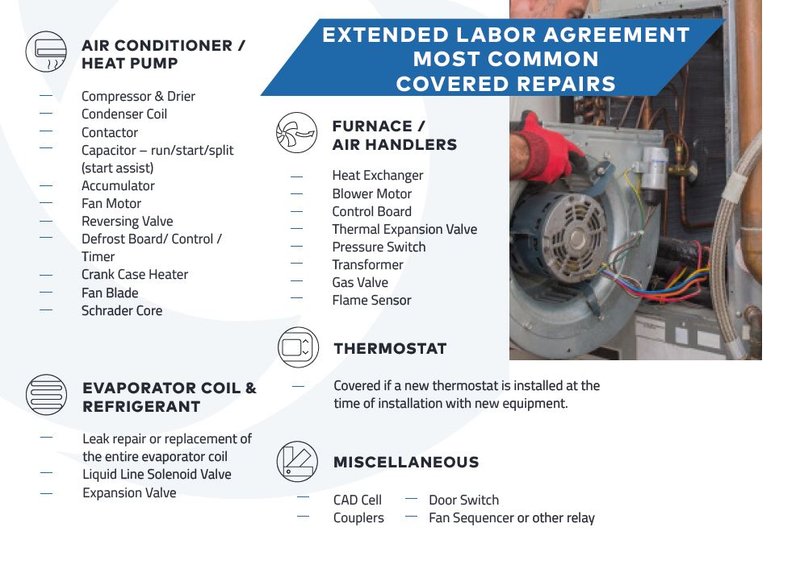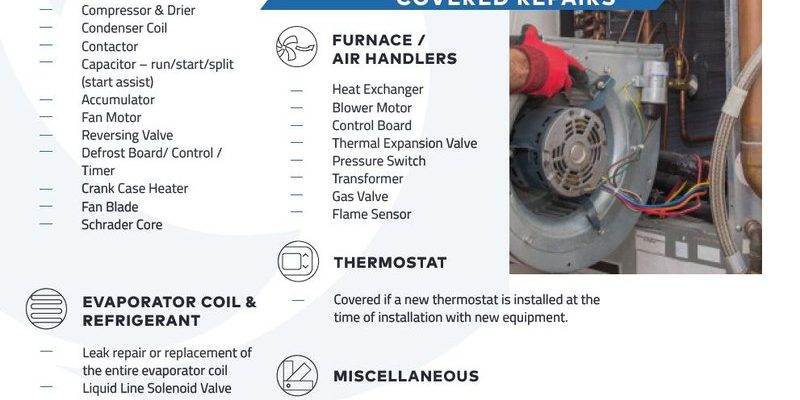
When it comes to heating and cooling, Goodman is a popular brand because it balances value with reliability. Their air conditioners, heat pumps, and furnaces get decent marks for performance. But like any machine that keeps your home comfortable, things can go wrong—sometimes at the worst moments. So, is that extra layer of warranty coverage really worth the extra cash, or is it just a sneaky way for companies to squeeze a few more bucks out of you? Let’s break it down piece by piece.
Understanding Goodman’s Standard Warranty
Every Goodman HVAC system comes with a baseline manufacturer’s warranty, and honestly, it’s more generous than some folks realize. Typically, you’ll see coverage like a 10-year limited parts warranty or even a lifetime compressor warranty for certain models if the system is registered within 60 days of installation. That means if a major part fails due to a manufacturer’s defect, Goodman will foot the bill for the part itself—although not for the labor.
But here’s the thing: these standard warranties always have fine print. They don’t cover labor (that’s the cost of the technician fixing your system), and they won’t help if the damage was caused by poor installation or skipped maintenance. If you try to DIY a fix and accidentally cause more trouble, you’re probably out of luck. That’s where extended warranties start whispering, “Wouldn’t it be nice if you didn’t have to worry about any of that?”
Think of the standard Goodman warranty as a decent safety net. It’s there for the big stuff but doesn’t catch every fall.
This baseline warranty usually requires proper registration, which many homeowners forget. Missing that small detail can actually slash your coverage in half—so always double-check the paperwork after installing your Goodman HVAC system.
What Does an Extended Warranty Cover?
You might be wondering what, exactly, an extended warranty adds to the mix. Unlike the built-in manufacturer’s coverage, an extended warranty (sometimes marketed as a protection plan or service agreement) aims to fill in those gaps that make homeowners sweat.
- Labor costs: This is the biggie. Most extended plans cover the price of both parts and the technician’s time.
- Extra parts coverage: Some extended warranties include additional components that might be excluded from the basic warranty, such as thermostats, controls, or even remote sensors that sync with your system.
- Diagnostic and troubleshooting visits: If your Goodman system starts acting up, extended plans may cover the call-out fee for a professional to come inspect, pair, and reset your system, or replace a faulty battery in your thermostat remote.
- Coverage for breakdowns due to normal wear: Some plans will help even if the breakdown isn’t tied directly to a manufacturer defect—just normal usage over time.
But don’t assume every plan is the same. Some are offered by Goodman directly, while others are through third-party providers or your installer. The best ones are easy to use, clearly spell out coverage, and make troubleshooting a breeze when you need service. Before signing, always ask: Who do I call when something breaks? Is it the manufacturer, the dealer, or someone else?
The Real-World Costs of HVAC Repairs
Here’s where things get a little nerve-racking. Replacing a major component—like a compressor, blower motor, or control board—in a Goodman HVAC system isn’t cheap. Even if the part itself is covered under warranty, you’ll still pay for the diagnosis, the labor to swap it out, and sometimes extra fees for code upgrades or system resets.
Let me paint a quick picture. Say your Goodman air conditioner compressor kicks the bucket just after the labor warranty ends. The part might be covered (yay!), but the labor bill could range from $500 to $1,500. And if you need emergency service during a summer heat wave or a winter freeze, rates shoot up even more.
- Compressor replacement labor: $800–$1,500
- Blower motor replacement: $400–$900
- Diagnostic service call: $100–$200 (before any repair work even begins!)
These numbers can add up fast—especially if you’re unlucky enough to have two or more problems in a short period. Extended warranties can make those surprise bills much less scary by covering labor and sometimes even annual system tune-ups.
When Does an Extended Warranty Make Sense?
Honestly, an extended warranty for a Goodman HVAC system isn’t always a slam dunk. Sometimes it feels like buying travel insurance for a road trip—you might not need it, but you’ll be glad if something goes sideways. So, when should you really consider it?
- You plan to stay put: If you know you’ll be in your current home for the next 5–10 years, you’re more likely to see a return on the investment.
- You dread surprise bills: If the idea of a sudden $1,000 repair makes your stomach drop, that peace of mind is worth factoring into your decision.
- Your system gets heavy use: Maybe you live in an area with harsh winters or sticky summers and your Goodman runs hard year-round. More usage means more wear and tear—and a greater chance something will need fixing.
- You’re not a DIYer: Some folks are handy with a remote, but less so with compressors or circuit boards. If you want everything handled by pros, extended coverage makes troubleshooting and repairs much simpler.
On the flip side, if you’re planning to move soon or you’re comfortable handling minor repairs or syncing up simple system resets yourself, you might not need the extra protection.
The Downsides of Extended Warranties
Not every extended warranty is a great deal. Sometimes, the fine print is packed tighter than a control board in a Goodman furnace. Coverage limits, exclusions, and complicated claims processes can make the whole thing feel like trying to pair an old remote with a brand new TV—it just doesn’t always work the way you hope.
Some things to watch out for:
- Limited coverage: Some warranties exclude key parts (especially wear items) or only cover specific troubleshooting codes and issues, but not bigger failures.
- Service network restrictions: You might have to use their approved technicians, which isn’t always the company you like or trust.
- Upfront costs: Extended warranties add a chunk of change on top of your system price. That money might be better set aside in a rainy day fund for HVAC repairs instead.
- Claims headaches: The process to get things fixed can be slow or involve lots of paperwork. If you like fast, simple solutions, read the terms carefully—especially who you call for troubleshooting and resets.
Don’t let the promise of “no out-of-pocket costs” blind you. Always read the details and consider if the coverage fits how you actually use your Goodman system.
Comparing Extended Warranties: Goodman vs. Third-Party Plans
When you buy a Goodman HVAC, the extended warranty may come directly from Goodman or from an independent provider—think of it like choosing between an official universal remote and a brand-specific one. Each has its quirks.
- Factory warranties: Goodman’s own plans are often more streamlined and typically integrate with your standard warranty. The upside? Fewer hassles syncing coverage or resetting the registration process.
- Dealer or third-party plans: These can offer broader parts and labor coverage, sometimes even including annual maintenance visits or priority service. But sometimes, you’re dealing with a totally separate company if something goes wrong, which can make troubleshooting feel like ping-ponging between customer service lines.
Here’s a quick breakdown in table form:
| Plan Type | Coverage | Claim Process | Service Options |
| Goodman Factory Extended | Parts & limited labor | Straightforward, handled by Goodman | Authorized dealers only |
| Dealer/Third-Party | Broad parts, labor, extras | May be slower, more paperwork | Wider network, sometimes less strict |
If you’re looking at a third-party plan, ask about coverage for things like battery replacement in smart thermostats, pairing or syncing remotes, and even code updates for newer, smarter HVAC models.
Do You Need an Extended Warranty for a Reliable Brand Like Goodman?
You might be thinking, “But isn’t Goodman supposed to be really reliable?” And honestly, they are—Goodman HVAC systems have a solid track record for residential use, especially when installed and maintained properly. That said, even the best brands have their share of repairs. Electronic controls, circuit boards, and even the most rugged compressors can fail earlier than expected.
An extended warranty is sort of like an umbrella. Most days, you won’t need it, but when that freak storm of repairs rolls in, you’ll be glad you picked it up. If you’re the sort of person who likes to sync, code, and reset your own gadgets—or if you’ve got a dependable local technician—maybe you’ll skip the extra coverage and take your chances.
But if you want every possible safeguard (and a hotline for troubleshooting if your system throws a mystery error code at 2 a.m.), an extended warranty might be just the peace of mind you’re after.
So, Is an Extended Warranty for a Goodman HVAC System Worth It?
Let me level with you. There’s no one-size-fits-all answer here. The best choice depends on your budget, your comfort with risk, and how much you value convenience. For some, the cost of coverage is a small price to avoid surprise repair bills and the stress of hunting down a technician. For others, especially those handy with a reset button and a troubleshooting guide, the standard Goodman warranty is more than enough.
How do you decide? Take a good look at:
- Your budget and risk tolerance
- The details of both the standard and extended warranties
- Your plans for home ownership
- How much you’re willing to DIY
At the end of the day, an extended warranty for your Goodman HVAC system is a bit like buying peace of mind. Only you know how much that’s worth in your own home.
Whether you say yes or no to the extra coverage, a little research and careful reading will help you avoid common headaches—and keep your Goodman system running cool and quiet, with no surprise interruptions. If you ever find yourself stuck or facing a mysterious error code, don’t forget: sometimes the first step is as simple as a reset or a quick call to a trusted technician. Stay comfortable out there!
